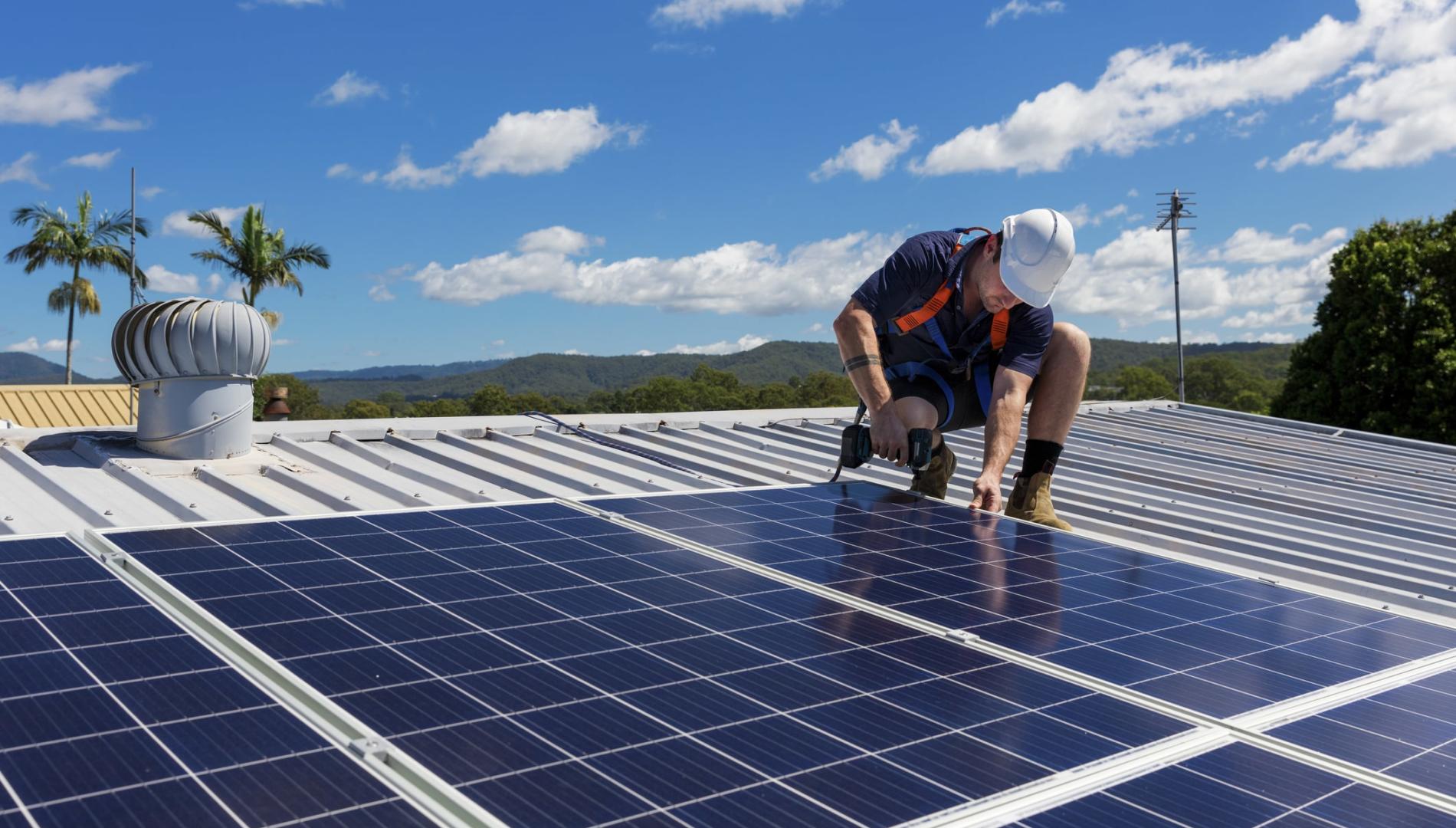Following a federal budget that boasted about fossil fuel profits and included continued support for the industry, voters might be wondering why the Australian government continues prioritising fossil fuels at the expense of climate action.
The 2024-25 federal budget handed down by Treasurer Jim Chalmers featured an unexpected $9.3 billion surplus, driven partly by record fossil fuel profits.
While the budget contained investment in clean energy, this was overshadowed by tens of billions of dollars in support for the fossil fuel industry, allowing it to contribute further to the global climate crisis.
So why have successive Australian governments failed to embrace the country’s potential to become a clean energy superpower? And can the tide be turned?
The climate crisis is one of our most important global challenges, and there’s an urgent need for strong action to address it.
As people around the world experience serious climate impacts, government action remains insufficient. Countries such as Australia, wich are most to blame and most able to act, have a clear responsibility to lead. Yet, Australia remains a prominent laggard.
Over the past decade, experts have continually ranked Australia’s climate performance poorly, as evidenced by the Climate Change Performance Index and Climate Action Tracker initiative.
So how did we get here? In a recent publication, co-authored with Monash University’s Professor Robert Thomson, we explored three periods of Australian climate action over the past decade where changes in governing parties led to shifts in views on and approaches to climate action.
Three periods of climate action
This first period began with the Labor government led by then-PM Kevin Rudd proposing an emissions trading scheme (ETS) in 2008 to effectively price harmful emissions.
Following unsuccessful negotiations with the Liberal Party (Liberals) and an unwillingness to negotiate with the Greens, the government failed to pass the ETS.
In 2010, the Rudd government also proposed a tax on extractive industries, which mining companies and lobby groups opposed.
Before the Rudd government’s mining tax could be passed,Julia Gillard successfully challenged Rudd’s leadership.
Following the 2010 election, Gillard formed a minority government supported by the Greens and independents that broke the climate deadlock, establishing an ETS and mining tax. The ETS increased the emissions reduction target to 80% (from 60%), while the mining tax narrowed the scope and reduced the amount taxed to 30% (from 40%).
The ETS and mining tax were short-lived, with both repealed during the following period of Liberal-National Coalition governments beginning with Tony Abbott’s prime ministership in 2013. Australia remains the only country in the world to repeal a national ETS.
The two years when the ETS operated also remain Australia’s most successful period for reducing carbon emissions. Instead of the ETS, the Abbott government established an emissions reduction fund where companies would, instead of paying for emissions, compete for funds to support reductions or offsets.
Read more: Do we want a wind farm outside our window? What Australians think about the net zero transition
Following Abbott, two more Liberal prime ministers – Malcolm Turnbull and Scott Morrison – oversaw lacklustre climate efforts.
Emissions reduction targets set during this period included a weak 2030 emissions reduction target of 26-28% (on 2005 levels), and a much-too-late net zero target of 2050.
The final period began with Labor returning to government in 2022 under Prime Minister Anthony Albanese.
The Albanese government adopted a more ambitious, albeit still inadequate, 2030 target of 43%. According to the Climate Council, if Australia were to set targets compatible with the Paris Agreement aim to limit warming to 1.5°C, the country would need to increase its 2030 target to 75%, and bring forward its net zero target from 2050 to 2035.
Australian governments alone will not determine what happens next. Equally as important is which forces outside the parliament wield the most influence.
Drivers that encourage further denial and delay
The fossil fuel industry is a significant source of resistance to addressing the climate crisis. Australia remains heavily dependent on fossil fuels. This continued reliance hampers the clean energy transition, particularly when considering the export emissions that are not included in its emissions reduction targets.
In 2020, export emissions were more than double domestic ones. Because transitioning to a clean energy-based economy will majorly impact the fossil fuel industry, it has an interest in continued inaction.
Research has shown that the fossil fuel industry's strong political influence has played a major role in stalling climate action, with donations from the industry to the major political parties increasing significantly in recent years. Between 2021 and 2022, the industry donated $2.3 million to the major parties.
This increased investment, coupled with significant time and money spent lobbying politicians, has resulted in impressive returns for the fossil fuel industry, evidenced by the massive government subsidies received.
A clear example of the political lobbying the industry undertakes is the massive $22 million campaign against the Rudd government’s mining tax in 2010.
Additionally, when major-party politicians and staffers leave politics, they ’re often offered lucrative roles at mining and energy companies, with researchers identifying more than 180 people who moved from senior government positions to positions in the fossil fuel industry between 2007 and 2017.
Read more: Here’s how Australia could actually get to net zero
The favourable policy treatment received by the fossil fuel industry can also be linked to climate disinformation (incorrect or manipulated information spread to deceive and mislead) and misinformation (similarly incorrect information spread unwittingly). This includes both straight-up climate denial and more deceptive strategies.
Arguments against climate action are often based on false or misleading information spread by influential figures and media.
Commonly-deployed arguments against climate action are addressed in detail in the Institute for Strategic Dialogue’s report, entitled Deny, Deceive, Delay.
One oft-repeated falsehood is that what Australia does on climate is insignificant. Other commonly-cited inaccuracies include the view that Australia produces cleaner coal, and that carbon capture and storage (CCS) will be a “silver bullet” solution.
Despite none of these claims withstanding further scrutiny, they continue to be perpetuated.
Drivers that encourage greater climate action
A clear example of a driver that encourages bolder climate action is climate change-fuelled disasters, with extreme weather events such as the 2019-20 Black Summer bushfires along the east coast now occurring more regularly in Australia.
As in the rest of the world, temperatures in Australia are rising. As a result, Australia is highly vulnerable to adverse consequences, with the Bureau of Meteorology’s 2022 State of the Climate report documenting considerable increases in extreme heat and flood risk.
Such climate events have given Australians more proximate examples of why urgent action is so important, and contribute to increasing concern about more severe longer-term impacts.
There have also been shifts in public, business and interest group support in recentyears.
According to the Australia Institute’s 2022 Climate of the Nation report, 80% of Australians believe climate change is occurring. Further, a 2022 poll by the Lowy Institute revealed that 89% of Australians believe the problem should be addressed. And there’s a clear majority nationally – when surveyed in 2021, a majority of voters in every federal electorate supported increased climate action.
Read more: Mainstreaming climate change in government decision-making
In addition to broad public support, people have used protest to pressure policymakers, and many businesses also support stronger climate action, with even the rather conservative Business Council of Australia supporting more ambitious action than the Albanese government.
Pressure for Australia to take stronger climate action is also present at the international level.
The most prominent avenue for international pressure is climate negotiations, wherein other countries can apply pressure and support initiatives that encourage greater climate action. More important for Australia, perhaps, is economic and strategic international pressure.
For decades, Pacific Island countries, some of which are experiencing receding shorelines due to coastal erosion from rising sea levels, have been challenging Australia’s reluctance to take stronger climate action.
An example from 2022 was former Pacific Island leaders releasing a statement calling on Australia to “undertake credible and urgent actions on climate change”, which they labelled the “biggest security threat” faced by their countries.
Outside the region, pressure has predominantly come from some of Australia’s more climate-ambitious allies and trading partners. Recent examples include criticisms during trade deal negotiations with the United Kingdom, and stalled trade talks with European Union member states.
Similar pressure has come from the United States in recent years, with a top US diplomat calling for Australia to adopt more ambitious climate goals.
International pressure to take stronger action can also be applied indirectly, such as when important countries raise their climate ambitions. An example of this is the US’s Inflation Reduction Act, comprising investments of US$369 billion in climate initiatives, which the Clean Energy Council said would lead to significant international investment being directed to the US rather than Australia.
Finally, another factor that can contribute to greater climate action is Australian states and territories committing to more ambitious climate action. Such commitments could contribute to Australia-wide targets being met earlier than they would otherwise. This is evident in the differences between emission reduction targets set by the Australian government and state and territory governments.
As documented in Climateworks’ Government Climate Action report, Tasmania achieved net zero emissions in 2015, and Victoria and the Australian Capital Territory are both aiming for net zero by 2045.
Many states and territories have also set stronger 2030 emissions reduction targets, including the ACT, South Australia, New South Wales and Victoria. Besides Tasmania, though, none of these subnational targets are compatible with the Paris Agreement’s aim to limit warming to 1.5°C.
Where to from here?
The outcome of the 2022 election resulted in stronger climate action than Australia has seen in close to a decade, suggesting a shift in the balance between forces encouraging greater climate action and those encouraging further denial and delay.
While some improvement is promising, as the federal budget highlights, Australian climate action remains inadequate. In the time left to act, how might Australia move on from the denial and delay of the past, and rise to the global challenge?
Realising the significant potential for change depends partly on overcoming the stagnation that has characterised Australian climate politics over the past decade.
Pressure from drivers encouraging greater climate action is increasing, and might lead to stronger climate commitments. However, to be effective, this must be coupled with addressing barriers to climate action.
Within the parliament, stronger climate action is more likely to be achieved, since the government requires the support of more climate-ambitious crossbenchers to pass legislation.
While this has not yet led to a considerable increase in climate action, the potential for the Greens and teal independents to achieve greater climate action remains. Their presence and likely growth in future elections might provide the necessary pressure to commit to stronger action.
There are reasons to be optimistic that Australia will rise to the global challenge posed by the climate crisis, but at the same time, those seeking further denial and delay will continue resisting this. Only time will tell whether the tide will turn on Australian climate action.






